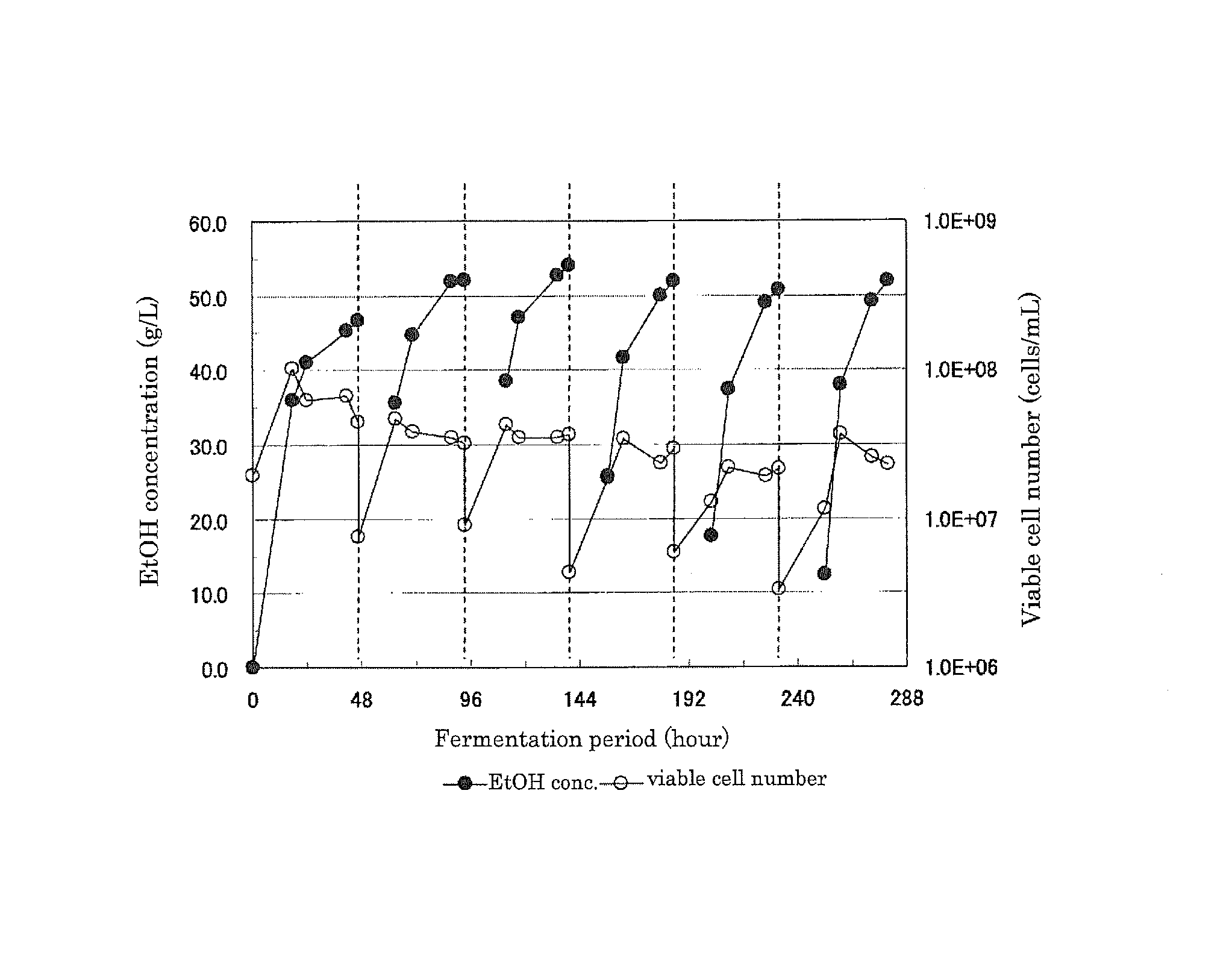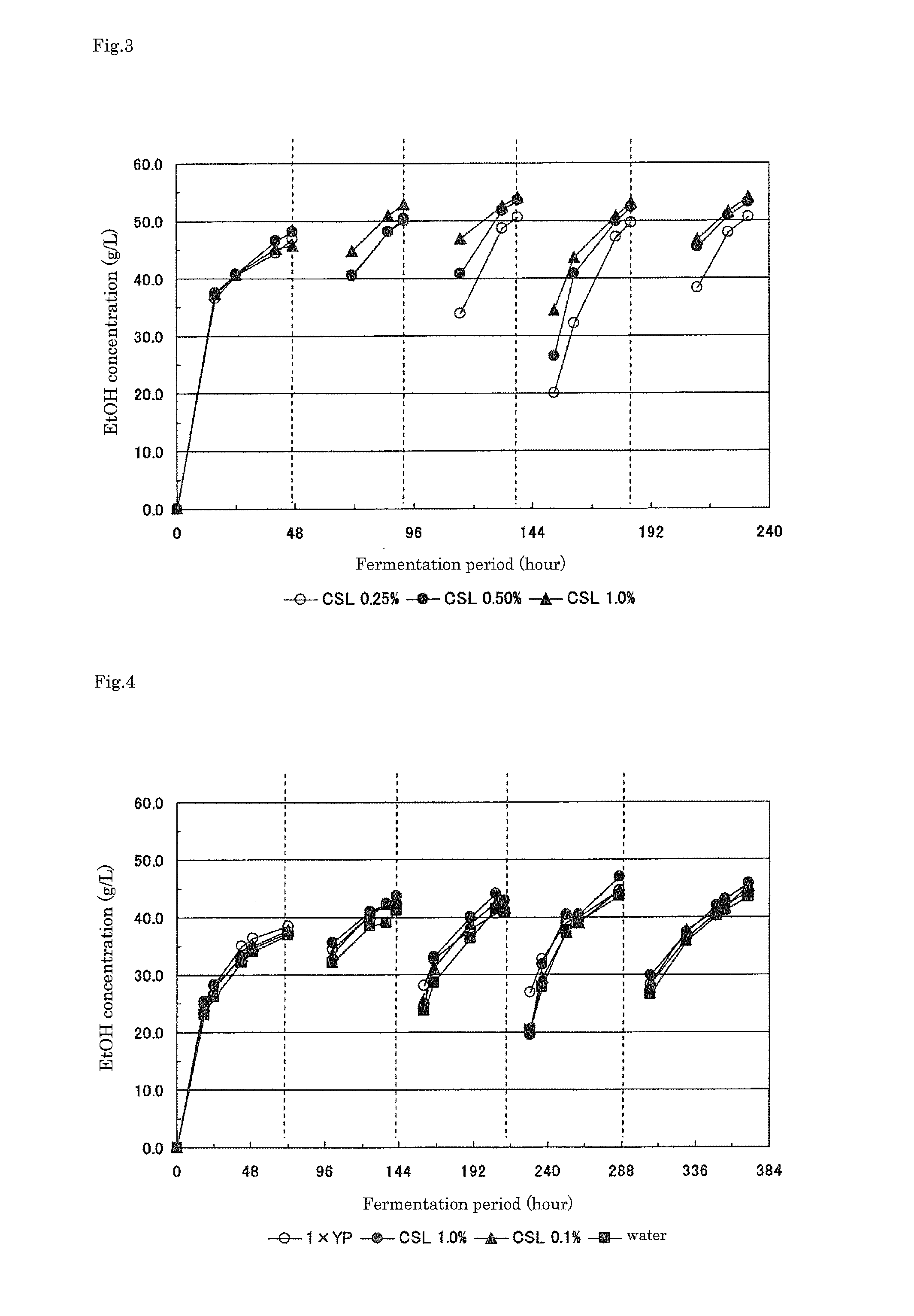Method for producing ethanol
a technology of ethanol and ethanol, applied in the field of ethanol production, can solve the problems of low glucose yield (saccharification rate), increased cost, and food competition of bioethanol, and achieve the effects of reducing the cost of preparing a new batch of yeast, and reducing the freshness
- Summary
- Abstract
- Description
- Claims
- Application Information
AI Technical Summary
Benefits of technology
Problems solved by technology
Method used
Image
Examples
example 2
Ethanol Fermentation Using Rice Straw 2
[0091]An experiment was performed in the same manner as in Example 1, except that a filtration separation was performed with a hydrasieve (0.1 mm screen; Toyo Screen Kogyo Co. Ltd.) instead of the centrifugation at a low rotation rate (100 G) using a centrifuge in Step 4 in Example 1. The collected supernatant (liquid portion) was 85% by mass.
example 3
Ethanol Fermentation Using Rice Straw 3
[0092]An experiment was performed in the same manner as in Example 1, except that a micro separator (TSK-80 Basket Type Centrifuge; Σ: 31 m2, bowl volume: 7 L, solid space: 4.8 L) was used for the centrifugation at an amount of supplied solution of 50 L / H instead of the centrifugation at a low rotation rate (100 G) with a centrifuge and a disk type centrifuge (LAPX 404 manufactured by Alfa Laval; Σ: 5230 m2, bowl volume: 2.2 L, solid space: 1.1 L) was used for the centrifugation at an amount of supplied solution of 100 L / H instead of the centrifugation at a high rotation rate (1200 G) with a centrifuge. The supernatant (liquid portion) collected in the first centrifugation was 83% by mass. The precipitate (solid content) collected in the second centrifugation was 25% by mass. The concentration of yeast cells in each fraction is shown in Table 3.
[0093]
TABLE 3fractionviable cell number (number / mL)supernatent of microseparator6.40E+06supernatent o...
example 4
Ethanol Fermentation Using Rice Straw 4
[0095]The ethanol fermentation was performed in the same manner as in Example 1, except that an enzymatic treatment solution was prepared by adding corn steep liquor (CSL) in the amount of 0.0625% by mass with respect to the total volume (mL) of the enzymatic treatment solution instead of 5.0 mL of 10×YP in Step 2 in Example 1.
PUM
| Property | Measurement | Unit |
|---|---|---|
| temperature | aaaaa | aaaaa |
| pressure | aaaaa | aaaaa |
| dry weight | aaaaa | aaaaa |
Abstract
Description
Claims
Application Information
 Login to View More
Login to View More - R&D
- Intellectual Property
- Life Sciences
- Materials
- Tech Scout
- Unparalleled Data Quality
- Higher Quality Content
- 60% Fewer Hallucinations
Browse by: Latest US Patents, China's latest patents, Technical Efficacy Thesaurus, Application Domain, Technology Topic, Popular Technical Reports.
© 2025 PatSnap. All rights reserved.Legal|Privacy policy|Modern Slavery Act Transparency Statement|Sitemap|About US| Contact US: help@patsnap.com



